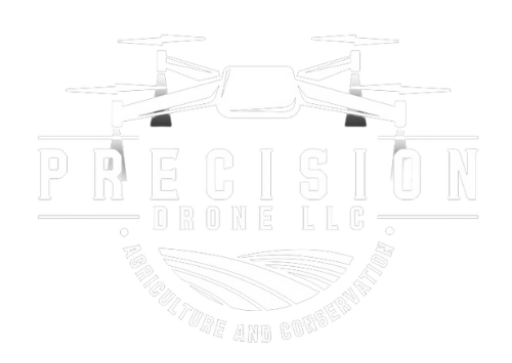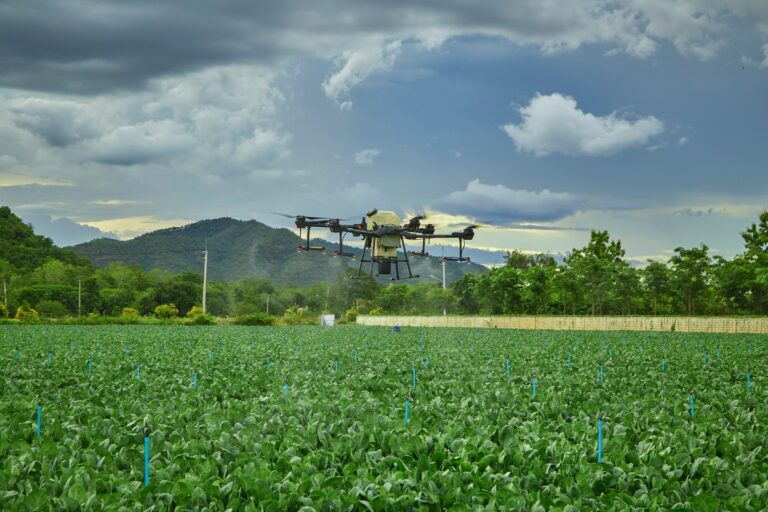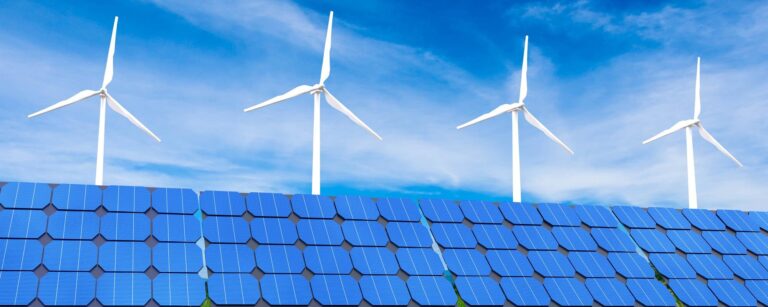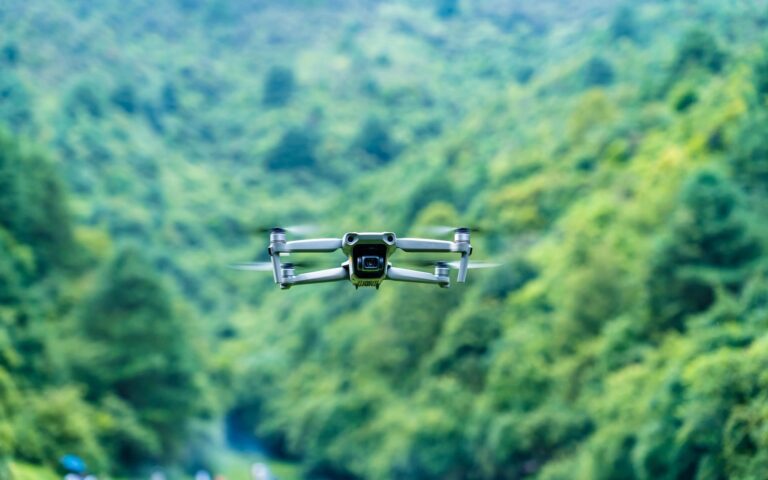Revolutionizing Agriculture: How Precision Drone Services Enhance Crop Health and Sustainability
In recent years, the agricultural industry has witnessed a technological transformation that is reshaping how we cultivate and conserve our natural resources. At the forefront of this change are precision drone services, which are revolutionizing traditional farming practices by providing unparalleled insights into crop health and sustainability. These innovative drones offer a suite of advanced capabilities, including precise monitoring, targeted applications, and comprehensive surveying, all designed to enhance agricultural efficiency and conservation efforts. As we delve into the world of agricultural drone service, we will explore how this cutting-edge technology not only optimizes productivity but also supports sustainable farming practices, ensuring a greener future for generations to come. Join us as we uncover the myriad ways in which these aerial solutions are setting new standards in agricultural excellence.
Introduction to Precision Drone Services
Precision drone services are transforming agriculture by providing innovative solutions that enhance productivity and sustainability. Through advanced technologies, these drones offer unique capabilities that traditional methods lack. This section explores the role of drones in agriculture, the benefits of aerial solutions, and Precision Drone LLC’s mission.
The Role of Drones in Agriculture
Drones in agriculture have become essential tools for modern farming practices. They offer aerial perspectives that allow farmers to monitor large fields efficiently. Traditionally, visual inspections were time-consuming and prone to errors. Drones change this by providing real-time data and high-resolution images, enabling farmers to make informed decisions quickly.
Key roles of drones in agriculture:
-
Data Collection: Drones gather information on crop health, soil conditions, and pest infestations.
-
Precision Agriculture: Allow targeted interventions, reducing wastage and increasing efficiency.
-
Surveying and Mapping: Create detailed maps of agricultural lands for better planning and management.
These roles highlight the indispensable nature of drones in transforming how agriculture is practiced today, ensuring better yields and resource management.
Benefits of Aerial Solutions
Aerial solutions offer numerous benefits to the agricultural sector. The ability to capture data from above provides insights that ground-based methods cannot. This enhanced view helps in identifying issues early and addressing them promptly.
Benefits include:
-
Enhanced Monitoring: Regular aerial surveys help in detecting crop stress and disease early.
-
Resource Efficiency: Application of fertilizers and pesticides can be optimized, reducing costs and environmental impact.
-
Increased Yields: With precise data, interventions are more effective, leading to better crop health and increased productivity.
These benefits underline the importance of integrating aerial solutions into modern farming practices, making agriculture more efficient and sustainable.
Precision Drone LLC’s Mission
Precision Drone LLC is committed to revolutionizing agriculture and conservation through cutting-edge technology. Our mission is to provide advanced drone solutions that enhance productivity, sustainability, and resource management.
Our approach includes:
-
Innovative Technology: Utilizing the latest drone technology for precise data collection.
-
Comprehensive Solutions: Offering a range of services from monitoring to targeted applications.
-
Sustainability Focus: Ensuring our services contribute to environmentally friendly farming practices.
Our dedication to supporting agricultural and environmental sectors drives us to continuously improve and adapt our offerings to meet the evolving needs of our clients, ensuring they achieve their goals efficiently.
Enhancing Crop Health
Improving crop health is crucial for maximizing agricultural output. Drones play a pivotal role in this by providing advanced monitoring techniques, enabling targeted application of resources, and optimizing yield and quality.
Advanced Monitoring Techniques
Advanced monitoring techniques using drones provide farmers with real-time insights into crop health. These drones use sensors and cameras to detect subtle changes in plant conditions that may not be visible to the naked eye.
Techniques include:
-
Multispectral Imaging: Captures data across different wavelengths to assess plant health.
-
Thermal Imaging: Identifies areas of water stress or disease by detecting temperature variations.
-
3D Mapping: Provides detailed topographical information for better land management.
These techniques help in early detection of issues, allowing for timely interventions that improve overall crop health and yield.
Targeted Application of Resources
Drones enable the targeted application of resources, such as water, fertilizers, and pesticides. This precision reduces waste, lowers costs, and minimizes the environmental impact of farming practices.
Steps for targeted application:
-
Data Analysis: Use drone-collected data to identify areas needing attention.
-
Resource Allocation: Determine the type and amount of resources required.
-
Application: Drones can apply resources directly, ensuring they reach only necessary areas.
This process ensures that resources are used efficiently, promoting sustainable agriculture and enhancing crop health.
Optimizing Yield and Quality
Optimizing yield and quality is a primary goal for farmers. Drones provide the insights needed to achieve this by monitoring crop conditions and identifying areas for improvement.
Key strategies include:
-
Precision Agriculture: Utilize data to tailor farming practices to specific field conditions.
-
Early Detection of Pests and Diseases: Address issues before they affect yield.
-
Efficient Resource Use: Apply resources where they are most needed to maximize growth.
These strategies ensure higher quality produce and increased yields, contributing to the profitability and sustainability of farming operations.
Sustainability and Conservation Efforts
Drones are not only enhancing efficiency but also supporting sustainability and conservation efforts. They help manage natural resources, employ eco-friendly surveying practices, and support environmental conservation.
Managing Natural Resources with Drones
Drones play a vital role in managing natural resources by providing precise data on water usage, soil health, and vegetation cover. This information is crucial for making informed decisions that protect resources and promote sustainable farming practices.
Benefits include:
-
Water Management: Identify areas of over- or under-irrigation to optimize usage.
-
Soil Health Monitoring: Detect issues early to maintain soil quality and fertility.
-
Vegetation Analysis: Monitor plant cover for better land use planning.
These applications ensure that natural resources are used sustainably, preserving them for future generations.
Eco-friendly Surveying Practices
Eco-friendly surveying practices using drones minimize the environmental impact of data collection. Unlike traditional methods, drones do not disturb the land or wildlife, making them ideal for sensitive areas.
Advantages include:
-
Minimal Environmental Disruption: Drones can survey large areas without impacting the ecosystem.
-
Accurate Data Collection: High-resolution images and data provide precise information.
-
Reduced Carbon Footprint: Drones consume less energy compared to traditional survey methods.
These practices ensure that surveying contributes positively to conservation efforts, aligning with sustainability goals.
Supporting Environmental Conservation
Supporting environmental conservation is an integral part of drone services in agriculture. By providing crucial data on ecosystems and biodiversity, drones help in conservation planning and implementation.
Approaches include:
-
Habitat Monitoring: Track changes in habitats to protect endangered species.
-
Biodiversity Assessments: Assess plant and animal diversity to inform conservation efforts.
-
Climate Change Research: Provide data for understanding environmental changes over time.
Such applications reinforce the role of drones in supporting conservation initiatives, ensuring a balanced approach to agricultural development and environmental protection.
Implementing Drone Technology
Implementing drone technology in agriculture requires careful integration into existing systems, addressing challenges and limitations, and keeping pace with future trends.
Integration in Existing Agricultural Systems
Integrating drone technology into existing agricultural systems involves strategic planning and adaptation. Farmers must ensure that drones complement their current practices and add value to their operations.
Steps for integration:
-
Assessment: Evaluate current needs and how drones can meet them.
-
Training: Provide training to staff on using drone technology effectively.
-
Implementation: Gradually introduce drones into daily operations, starting with pilot projects.
This approach ensures a smooth transition and maximizes the benefits of drone technology in improving agricultural practices.
Overcoming Challenges and Limitations
While drones offer numerous benefits, there are challenges and limitations to their use in agriculture. These include regulatory hurdles, technical issues, and cost concerns.
Challenges include:
-
Regulatory Compliance: Navigating drone regulations can be complex.
-
Technical Limitations: Issues with battery life and payload capacity.
-
Cost: Initial investment and ongoing maintenance expenses.
Addressing these challenges involves staying informed about regulations, investing in reliable technology, and considering the long-term benefits of drone use.
Future Trends in Agricultural Drones
The future of agricultural drones is promising, with ongoing innovations and advancements that will enhance their capabilities. Upcoming trends include increased automation, improved data analytics, and expanded applications.
Key trends include:
-
Automation: Drones will become more autonomous, reducing the need for human intervention.
-
Advanced Analytics: Enhanced data processing will provide deeper insights into agricultural practices.
-
New Applications: Emerging uses in areas like livestock management and climate monitoring.
These trends indicate that drones will continue to play a critical role in transforming agriculture, making it more efficient and sustainable.
Understanding Agriculture Drone Services Pricing
Understanding agriculture drone services pricing is crucial for farmers considering this technology. Pricing depends on various factors, and finding cost-effective solutions can lead to significant long-term benefits.
Factors Influencing Pricing
Several factors influence the pricing of agricultural drone services. These factors include the type of services offered, the technology used, and the scale of operations.
Factors include:
-
Service Type: Monitoring, surveying, or resource application services have different costs.
-
Technology: Advanced drones with superior capabilities may cost more.
-
Scale: Larger operations may incur higher costs but benefit from economies of scale.
Understanding these factors helps farmers make informed decisions and choose services that suit their needs and budget.
Cost-Effective Solutions for Farmers
Finding cost-effective solutions is essential for farmers looking to adopt drone technology. Exploring various options and comparing prices can lead to significant savings.
Recommendations for farmers:
-
Evaluate Needs: Determine what services are necessary and prioritize them.
-
Compare Providers: Research different service providers and compare their pricing.
-
Consider Packages: Look for bundled services that offer better value.
These strategies help farmers maximize the benefits of drone services while managing costs effectively.
Long-term Benefits and ROI
Investing in agricultural drone services offers long-term benefits and a positive return on investment (ROI). While initial costs may be high, the efficiency and productivity gains often outweigh these expenses.
Benefits include:
-
Increased Yields: Better crop management leads to higher productivity.
-
Cost Savings: Efficient resource use reduces input costs over time.
-
Sustainability: Improved practices contribute to environmental conservation.
These benefits underscore the value of drone services in agriculture, making them a worthwhile investment for forward-thinking farmers.








